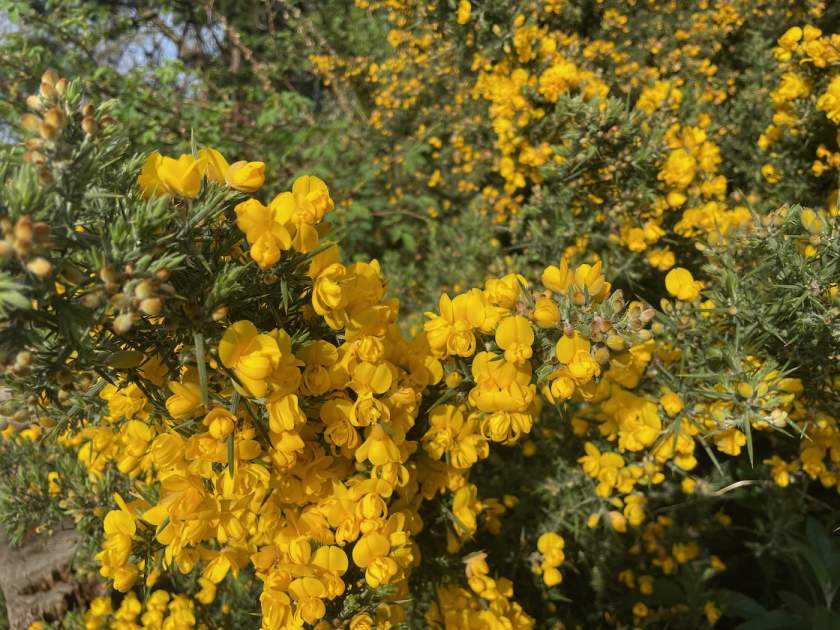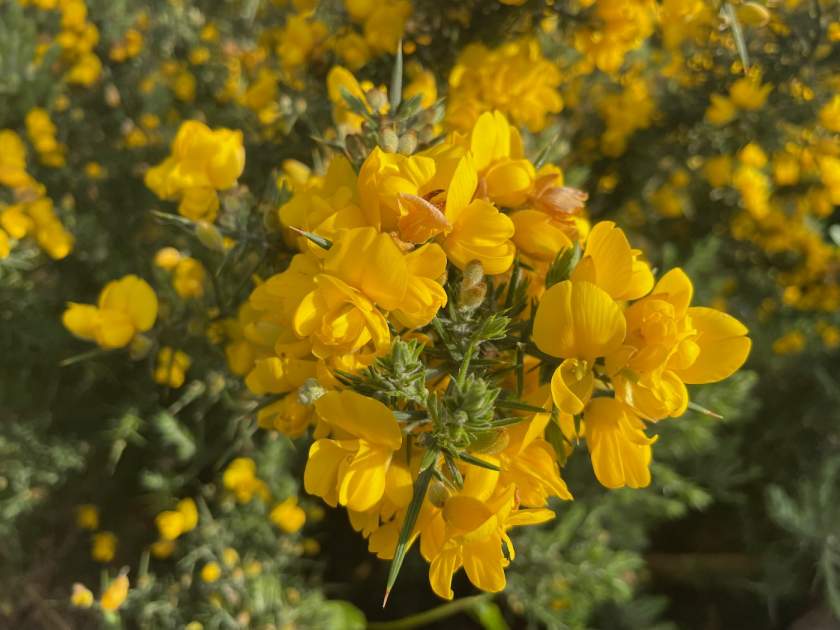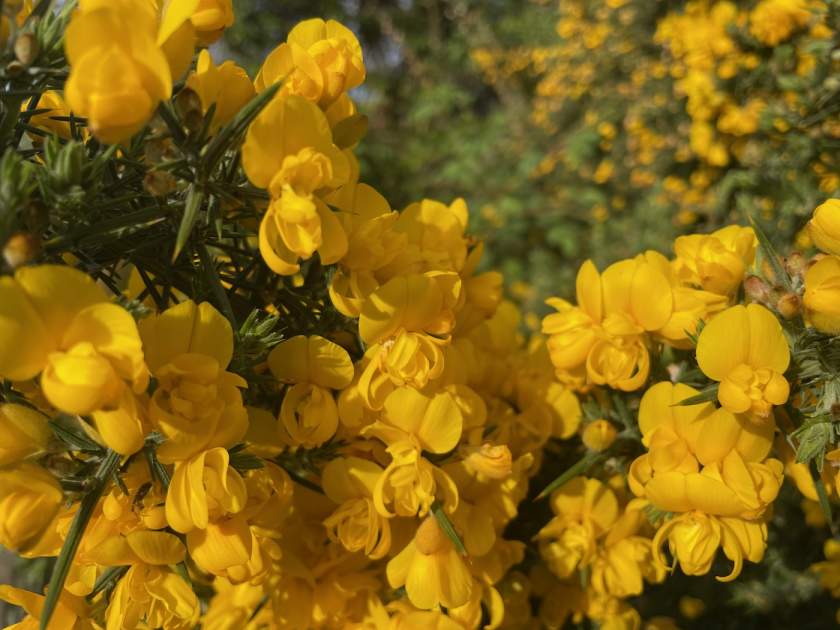Discover the Resilience and Beauty of Ulex europaeus – The Gorse
Native Habitat and Naming: Ulex europaeus, commonly known as Gorse, Common Gorse, Furze, or Whin, is a remarkable flowering plant belonging to the Fabaceae family. It is native to the British Isles and Western Europe. This enduring shrub has been recognized and appreciated for centuries for its hardiness and vibrant yellow blooms.
Characteristics of Leaves and Flowers
Gorse is an evergreen shrub that can reach heights of 2-3 meters (7-10 ft). The young stems display a vibrant green color, while the shoots and leaves are modified into sharp green spines, measuring approximately 1-3 centimeters (0.39-1.18 in) in length. Initially, young seedlings produce normal leaves that resemble small clover leaves for the first few months.
The solitary flowers of gorse are a striking yellow color, measuring 1-2 centimeters (0.39-0.79 in) in length. They possess the characteristic pea-flower structure typical of the Fabaceae family. While the flowers are produced throughout the year, they predominantly bloom during an extended period in spring. One notable feature of gorse flowers is their delightful coconut scent, adding an aromatic dimension to their visual beauty.
The fruit of Ulex europaeus is a legume, approximately 2 centimeters (0.79 in) long, and is dark purplish-brown. The pod is partially enclosed by the pale brown remnants of the flower. Inside the pod, small blackish, shiny, and hard seeds, numbering 2-3, await. These seeds have the unique ability to be ejected when the pod splits open during hot weather. Remarkably, the seeds of gorse remain viable for up to 30 years, contributing to the plant’s long-term reproductive success.
Cultivation of Ulex europaeus:
Sunlight: Thrives in Full Sun Gorse flourishes in full sun, making it an excellent choice for areas that receive ample sunlight throughout the day. Ensure that the plant has access to direct sunlight for optimal growth and flowering.
Watering: Moderate Ulex europaeus plants require moderate watering. While they can withstand periods of drought and are adapted to thrive in dry conditions, providing regular watering during dry spells will promote healthier growth and blooming. However, be cautious not to overwater, as gorse is naturally suited to withstand dry environments.
Soil: Adaptable but Thrives in Poor Soils Gorse exhibits exceptional adaptability when it comes to soil conditions. It can grow in various soil types, but it thrives particularly well in poor soils. One of the remarkable qualities of Ulex europaeus is its ability to fix nitrogen from the air, enabling it to colonize and dominate areas with nutrient-poor soils. However, it’s important to note that gorse’s ability to retain certain nutrients, such as calcium, magnesium, and sodium, can alter nutrient dynamics and potentially impoverish the soil over time.
Pest and Disease Management Ulex europaeus is known for its resilience and relatively few pest and disease issues. However, it’s always prudent to monitor the plant for any signs of infestation or disease. Pay particular attention to common pests such as aphids and spider mites. Additionally, occasional inspections for signs of fungal diseases, including powdery mildew and root rot, will help maintain the health of the plant.
Propagation and Maintenance
Ulex europaeus can be propagated through seed germination or by collecting and sowing mature seeds. The seeds of gorse are specially adapted to germinate after slight scorching from fire, making this plant well-suited to fire-prone environments. When it comes to maintenance, gorse is a tough and hardy plant that requires minimal care. Its longevity is impressive, with an average lifespan of around 30 years.
Cautionary Notes Due to its spiny nature, gorse can pose a challenge when it comes to handling and working around the plant. Exercise caution and wear protective gloves and clothing when tending to gorse. Additionally, be mindful of the potentially invasive nature of gorse in certain regions. It is essential to understand and adhere to local regulations regarding its cultivation and management.
Embrace the resilience and vibrant beauty of Ulex europaeus, the gorse. With its evergreen presence, stunning yellow flowers, and adaptability to poor soils, Gorse adds a touch of hardiness and charm to any landscape. Celebrate this enduring plant that has captivated hearts for generations with its aromatic blooms and remarkable ability to thrive in diverse environments.






